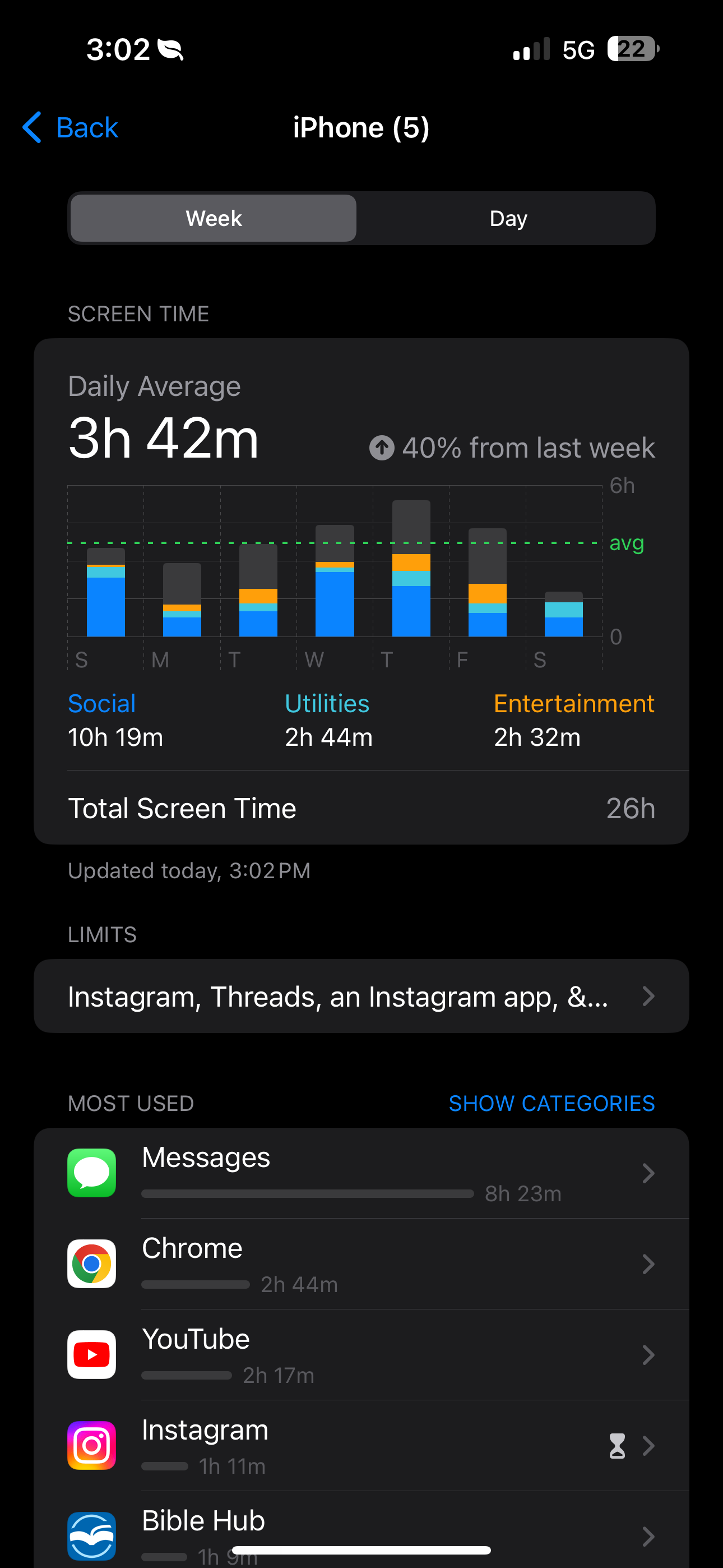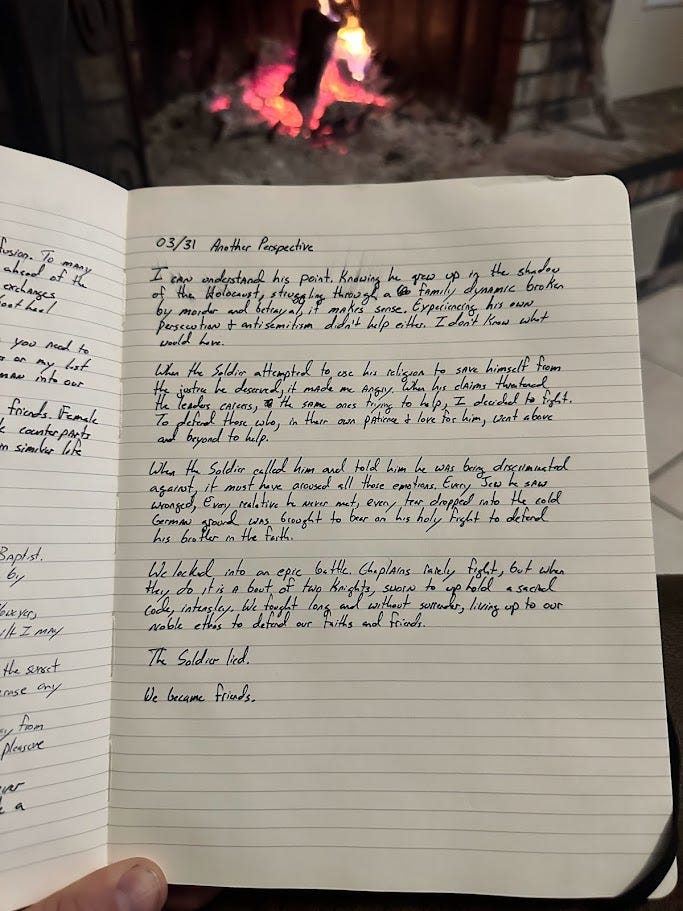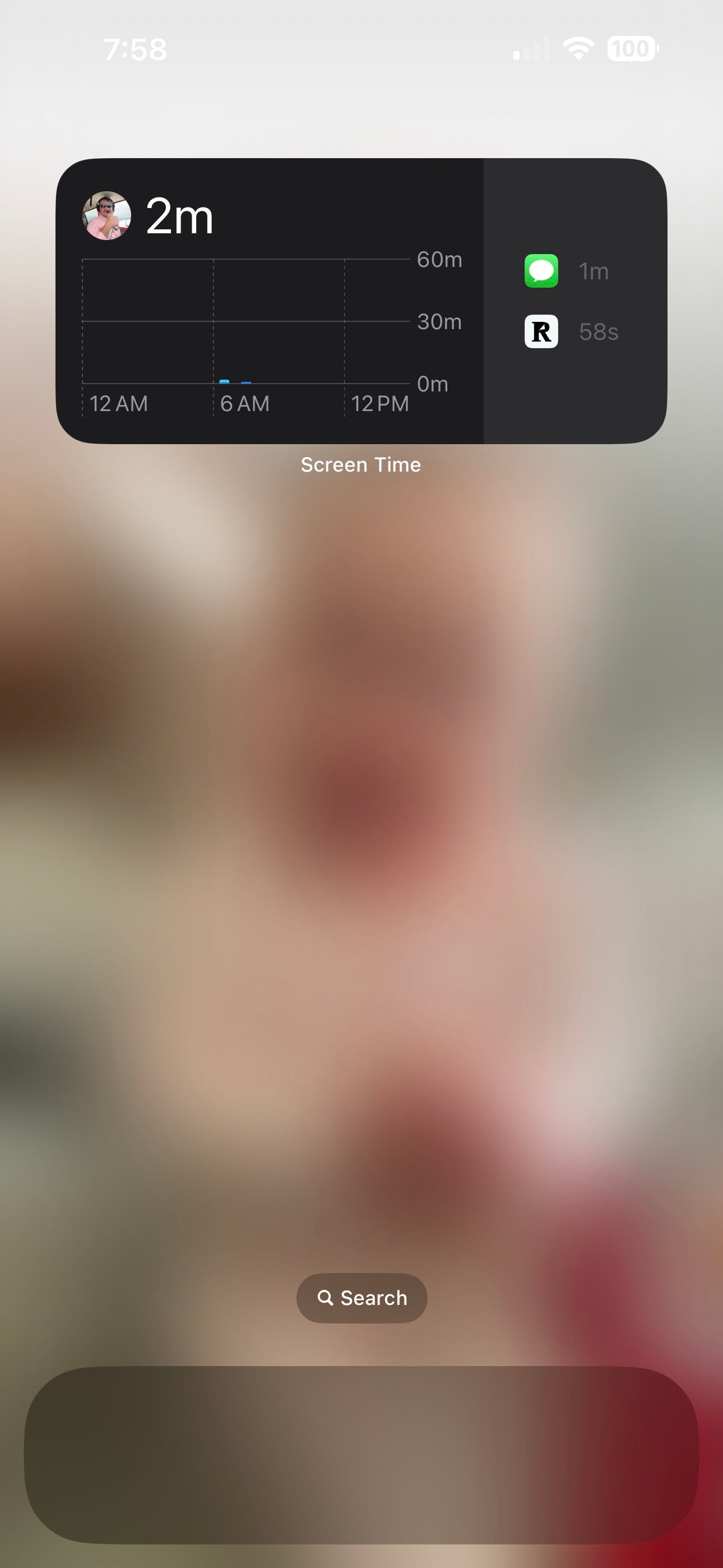“You are ignoring me”, Cait accused me.
“No, I’m not,” I responded. Internally, I rolled my eyes. We have this conversation at least once a week. She prattles on about something, someone texts me, I look at my phone, and then I get accused of ignoring her. A sequence of events that I can easily trace back to our courtship.
This time, the conversation spilled into a debate about phone usage. As with everything between us, a competition soon arose. For years, we debated who was the true “phone addict” and who wasn’t. With recent software updates installed, we could now check our screen time and have empirical evidence of the true culprit. With a few taps, we could see how much screen time we had amassed.
“Well, what’s your screen time at?”, she asked gleefully, dead certain she could never be on her phone as much as her inattentive husband. I looked down at my phone and realized that she had won, but not by much. The nearly two and a half hours she logged was only fifteen minutes better than my pitiful time.
I admitted defeat and took the lashings of my wife poking fun at me. That isn’t new or different; she wins almost all of our little bets. However, this one stung. What had I done on my phone for nearly three hours that day? Three whole hours of productivity lost. I can run a full half marathon in that time.
I looked down at my daughter playing on the floor in front of me. I thought about how much she had grown in the past six months and how soon she would be out of my house and on with her life. Nothing in this world is worth three hours of that precious time. I didn’t even want to do the math of three hours a day over the course of eighteen years. How much of her life was I wasting on my phone?
Right then and there, I made a decision: it’s time to rewind the clock and go analog.
Turn On Screen Time
Lucky for me, the device that robbed me of my daughter’s life also provided me with some tools to fix the problem it had created. By turning on the screen time widget and placing it on my home screen, I know just how much I have used my phone at any particular moment on any particular day.
The first step to solving any problem is to simply understand it. Abraham Lincoln famously stated that if given six hours to chop down a tree, he would spend four hours sharpening the axe. This scenario is no different; to stop the robbery of our time, we need to know just how much is being stolen and who is doing the thieving.
For me, texting is by far the greatest offender. Multiple group chats, work, and then just random conversations consisted of well over half of the time spent on my phone. Some of the time could be handwaved as I listen to many talks on YouTube as I work on things. That habit made up another chunk. However, the thirty or so minutes of average daily time spent on social media was extremely disconcerting.
Break Out The Moleskin
This whole event happened to occur during the Dead Reckoning Collective’s handwritten challenge. I started it but then got very sick in the middle and failed to complete it. However, during the two weeks of journaling, I came to really appreciate my return to writing things by hand.
A lightbulb went off, and much of the time that I spent on my phone was work-related. However, a lot of it came down to me needing to send myself a reminder or capture a thought. Yet, while I had it in my hand, I would check my messages, emails, and social accounts. That led from a quick email to a ten-minute phone session multiple times per day.
Enter our savior from the digital demons, the moleskin journal. Since I already had the journal and was writing in it regularly, I could just use my journal to take whatever notes I needed. I didn’t need to email myself a reminder, I would just jot it down and see it the next time I opened the journal. It worked all the way up until the smartphone came on the scene in 2007, why wouldn’t it work now? People have been using journals for this exact thing for centuries before Steve Jobs blew up the world.
Minimalist Phone Screen
Don’t confuse me for a Luddite. I still believe that technology has a place in our lives, but we need to be the master of it rather than the other way around. Just like anything else, the phone is a tool, and tools can be used or misused. I needed a way to put myself back in the phone’s driver’s seat and push out the notifications and bad habits.
Poking around on YouTube, I found a ton of granola-eating hipsters that espoused digital minimalism. I didn’t think that their attachment to record players and typewriters would help me on my quest, as cool as they may be. However, I did find one that radically changed my phone habits in the thirty seconds it took for me to set it up.
Having a minimal phone screen cuts my phone time from hours to minutes. When I first started playing with it, I thought it would be cool to get under an hour of phone time in a day. The first day, I barely hit thirty minutes.
The idea is fairly simple, you move everything off your homescreen and only use the Spotlight feature for accessing an app. That way, you don’t get pulled onto the phone because you see some random notification or react to Instagram in a Pavlovian manner. I will let you watch the video for full details, but I’m here to tell you it works and it works well.
Going Analog
On my way home yesterday, I stopped at a red light. I live in a small town, one small enough to never have “traffic” like you would in bigger cities. However, traffic seemed to amass at this particular red light, and no one seemed to move when the light turned. Looking around to determine the cause of the slowdown, I noticed something I never paid attention to. Everyone, every single person sitting behind the wheel of their stopped car, had their heads down looking at a phone. Of all the cars around me, I was the only person trying to understand why we hadn’t sped off when the light turned green.
This week, put down your phone and pick up the notebook.
Hone The Edge


















